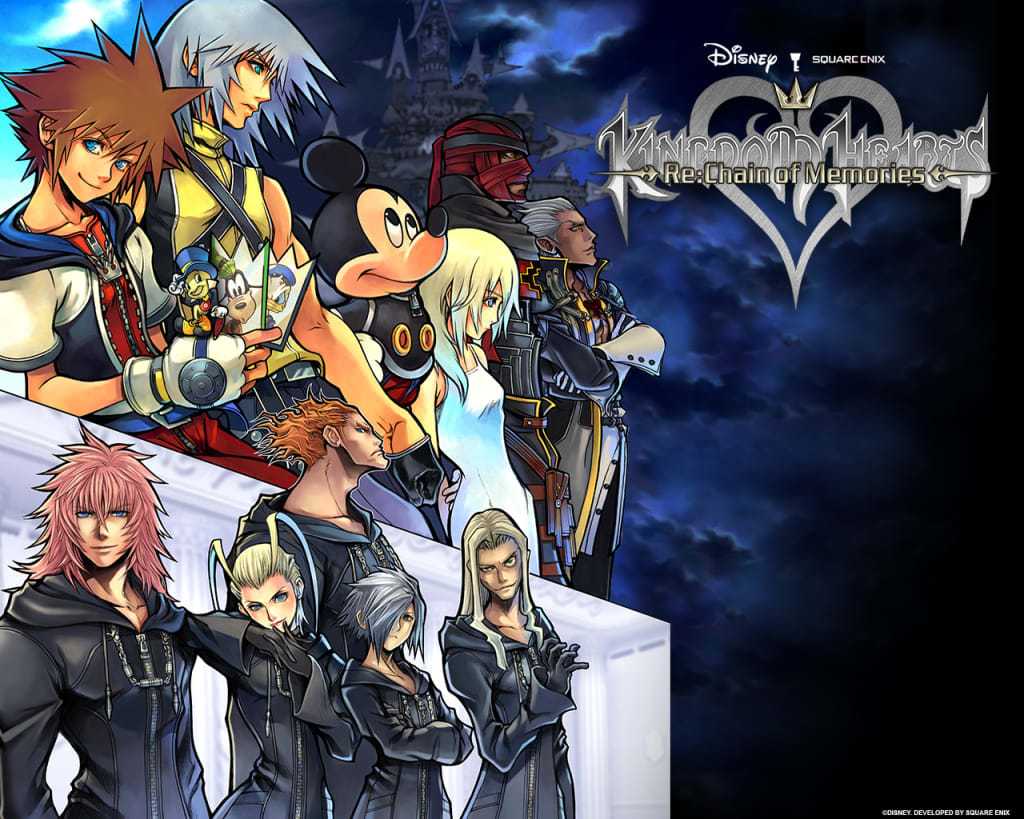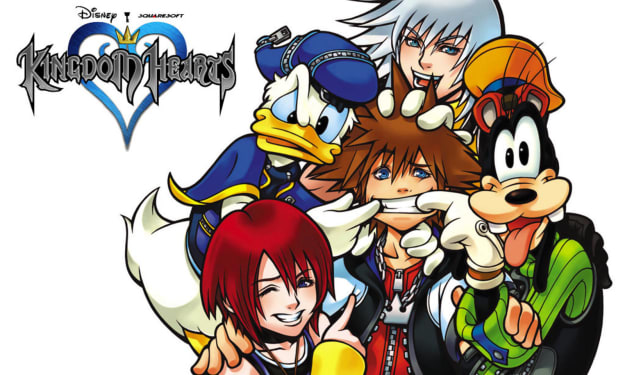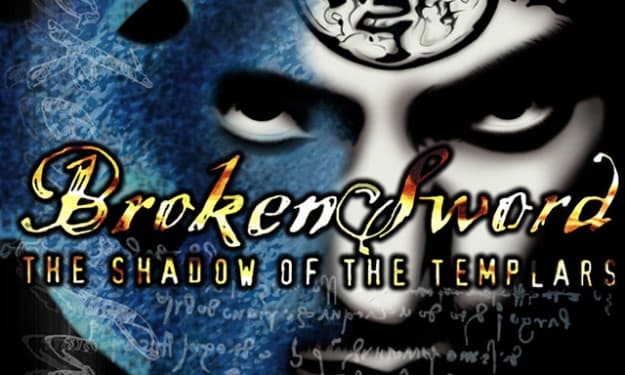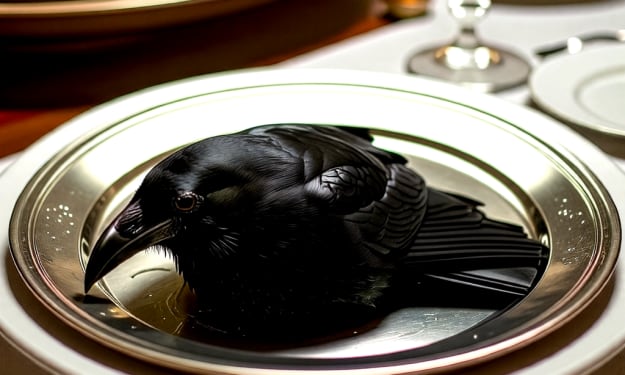'Kingdom Hearts Re:Chain of Memories' Review
It's time to DUEL...oh wait wrong game!

Continuing off from the last review that I did with Kingdom Hearts I we move onto the next in the timeline for the series, Chain of Memories. Originally this was a GBA game released in 2004 which was 2D but I never experienced it on this format. Later it was redone and made into a 3D adventure RPG game, similar to how the first game looked with its graphics. The first remake was made in 2007 as a second disc for Kingdom Hearts II Final Mix+ in Japan and making its way to North America in 2008 as a standalone title. Australia and Europe weren't lucky enough to play Chain of Memories until the 1.5 + 2.5 ReMix came out.
This time there are a few aspects to the play style of this game of which I was quite alarmed by. You use cards to battle, oh no...
As much as that may or may not sound odd to read which has you thinking "Nope, not playing that, can't be dealing with it", hold judgement back for now until I explain some things to try and ease the pressure of this thought.
The Story...

Castle Oblivion
I was saying that this title is next in the timeline for Kingdom Hearts, it follows straight after the final cut scene in the first game and has our three protagonists, Sora, Donald, and Goofy on the search for King Mickey and Riku, after the two seem to be trapped on the other side of the door of darkness when it was closed in the first game after defeating Ansem, Seeker of Darkness.
When searching for the missing friends they stumble across a hooded man in a black coat ahead of them. He tells Sora that he must follow a long road to find something Sora needs but the only way to claim it is to lose something dear to him. There was a crossroads but the path becomes one and the group comes across a tall, mysterious, and strangely shaped castle, this would turn out to be the location of the game known as Castle Oblivion.
When you first enter the Castle you all have the sudden thought that King Mickey and Riku are here which is reasoned to be suspicious. Shortly after you are welcomed by the hooded man again who explains that the castle plays around with your memories the more you climb, in his own cryptic kind of way. This then introduces the way you enter different floors, this would be by cards that represent memories, so you will be returning to worlds you've been to before in the first Kingdom Hearts game.
I should also really include that the hooded man is part of Organisation XIII, one of the coolest groups of bad guys I've seen in a video game, they wear the awesome black coats with their hoods up. The group has their own agenda of which I won't give away.
The style of play for this instalment differs greatly from the first game we had, as explained you use cards to battle your enemies. The battles occur like running into an enemy on the open field, after which the battle enters an arena. From here you take a stance and have your deck of cards to select from.
From the video above, you can see that the cards have numbers. This works in conjunction with what the enemy monsters use as they also use cards with numbers as well, the higher the number the less likely chance of a "card break". This is a term used to negate the oppositions card. Besides using a higher card, which you may not have, you can also initiate a card break by using a 0 card, this can break any card or combination, but bear in mind that if you use this card before an opponent uses a card it may be immediately be negated with any card number.
To be able to use special moves you need to stock cards, these show in the top part of the screen, the type of move is dependant on the combination of cards you create from your deck. Throughout the game you gain sleights which show you what combinations you need to make to perform the move. A combination of cards that adds up over 9 makes most enemies unable to break your card, unless they use a 0 card themselves.
Using the red cards, which display a varied type of Keyblade in battle, does a singular attack, so using more than one in a row will perform a combination attack, much like you'd be used to by spamming X in the first game.
Further, to attack cards you also get magic and summon cards, these are represented by a blue colour for the frame. These would include the usual elements such as fire, thunder, and ice. For summons you'll have the likes of Cloud Strife (Final Fantasy VII), Tinkerbell (Peter Pan), and Simba (Lion King), there are many more out there for you to find also.
Lastly, you get green displayed cards, these types of cards are your items and these can either be potions, elixirs, or ethers. Although you may be used to these restoring health and magic these instead immediately reload your card deck with either attack cards, magic cards, or both.
In battles you won't have Donald and Goofy helping out physically all the time. Instead, they'll appear around the room as cards which you can use in battle. You also can stock them up to produce different combination moves as well, or more powerful versions of their moves if stocking the same friend multiple times. With each world you can have a different friend card you can also use in battle to try out some new moves to help out.
Also included is the reload card, which is depicted as a plain black card with a number 1. When you run out of cards you can reset the deck manually, this can take time the more you do it in a single battle and will change to a 2 and then a 3 showing how much time it will take to reload, which is how the potions come in quite useful to save yourself from a manual reload.
After a battle has finished you gain experience and level up, after which you can increase three stats, the choices are health increase, deck capacity increase, and the choice of learning a new sleight, sleights are effectively recipes for new moves.
Getting around...

When going around the rooms for each stage in the game you need to open doors. To do this you need special cards that synthesise the type of room that appears. The doors often have requirements that either need a number that matches, or need to be higher or lower and/or need a specific colour. All the cards have their own respective power such as more heartless appear, stronger heartless appear, heartless move around slower, or even sleep. These cards are obtained normally after each battle in which you come out victorious. Other types of cards can include save points, moogle shops, or even a treasure chest room (Not the same as the below treasure room mentioned below).
Throughout the stages you get story specific cards, these often are like beginning, middle, and end cards of each level you are on. These are used to get to the rooms which progress the story along. In addition you also have the Key to Rewards card that takes you to a a special item that can give you a new ability or move card.
Between each room you still can run and jump like you normally could in the first game just has these added mechanics to change it up.
Overall I wasn't sure what to make of the changes that I was facing when playing this game, I had eventually got used to the play style and accepted it and ended up really enjoying it. After getting the platinum trophy for Kingdom Hearts I, I was eager to do the same again for Chain of Memories, which I managed to do. Some of the trophies were time consuming but my love for the game urged me to get through it all.
After looking at videos online I was impressed by the change they made from converting from GBA to the remake I had played on the PS4. It was a brave choice to make the main focus for the game using cards, I wouldn't want to see all future games like this but was a pleasant experience nonetheless.
Good points:
- Interesting twist on the game-play I was used to after playing Kingdom Hearts I.
- Retained the same charm with its music, everything there is the same from before.
- The story is awesome, I loved the conclusion and how everything developed from when you first entered Castle Oblivion.
- Although there aren't any secret bosses there is still greatness even after you finish the story with Sora.
- Organisation XIII.
Bad points:
- The layout of the levels is bland and mainly consists of different platforms and ledges to get to different doors, no changes through out the game.
- Don't do what I did and not use 0 cards, there were many moments where I was killed a lot due to not being able to cancel out a boss' move. Not the game's fault but mine, just keep that in mind.
- Getting the platinum can be a bit of a grind such as getting to level 99 and getting 300 rooms synthesised.
Personally, I can't think of too many bad things about the game, I enjoyed it all and its features apart from the blandness of the level design. I'd urge people to give it a try and give it a chance if you initially aren't too keen on the style of game-play.
Thanks for reading everyone!
About the Creator
Matt Breslin
Hey there, and thank you for visiting my profile and looking at my content. I'm an avid gamer and thought to myself this'll be a great place to talk about games I've enjoyed whilst also sharing other stories too. I hope you enjoy!






Comments
There are no comments for this story
Be the first to respond and start the conversation.